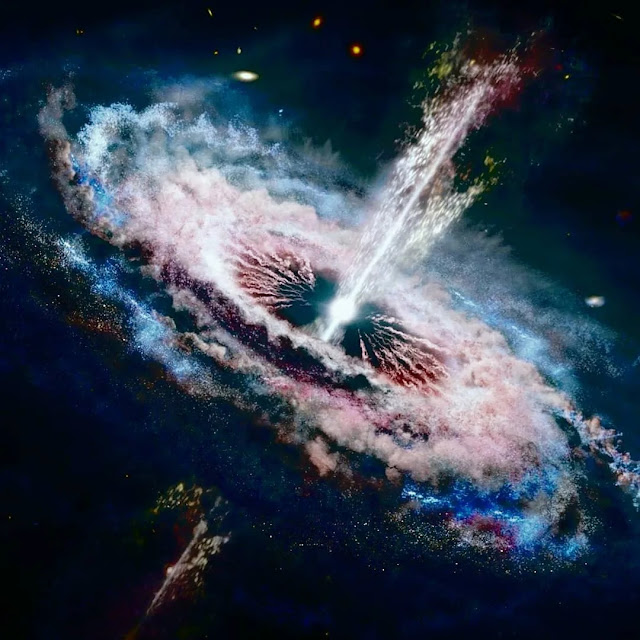Picture this: a monstrous black hole, millions or even billions of times the Sun's mass, devouring everything in its path – stars, gas, dust – all swirling into a glowing vortex of unimaginable power. This cosmic behemoth is a quasar, and it holds the terrifying ability to annihilate entire galaxies.

Quasars: The Universe's Brightest Brutes
Imagine a galaxy's heart, a supermassive black hole, gorging on the surrounding cosmic buffet of stars and gas. This ravenous feast creates an incandescent disc known as an accretion disc, and the entire spectacle is dubbed a quasar. These celestial powerhouses are the most luminous objects in the universe, outshining entire galaxies with their brilliance!
 |
| Youtube - LAB 360 |
Galactic Assassins Unleashed
So, how do these cosmic colossi threaten galactic life? Brace yourselves for their destructive methods:
Star Formation Blockade: Quasars radiate immense heat, scorching the surrounding gas to such an extent that star formation is halted, effectively starving the galaxy of its future.
 |
| Youtube - LAB 360 |
Galactic Winds: These cosmic tyrants also unleash powerful jets of particles, forcefully expelling gas from the galaxy, further hindering star formation.
Double the Trouble, Double the Destruction
 |
| Youtube - LAB 360 |
Recently, the James Webb Space Telescope made an astounding discovery – the most distant collision of supermassive black holes ever observed! This cosmic clash, occurring a mere 740 million years after the Big Bang, showcases the immense power unleashed when these galactic giants merge. Imagine the chaos when two black holes of such immense proportions collide, giving birth to a quasar of unimaginable destructive potential!
Mysteries Abound: Did Our Galaxy Harbor a Quasar Past?
 |
| Youtube - LAB 360 |
Thankfully, the supermassive black hole at the heart of our Milky Way, Sagittarius A*, is currently dormant. But could quasars be a natural phase in a galaxy's life cycle? Is our own galaxy safe from a future quasar eruption? Scientists are still grappling with these cosmic enigmas.
Life on a Knife's Edge?
 |
| Youtube - LAB 360 |
The existence of quasars highlights the delicate balance that allows life to flourish on Earth. A nearby quasar's jet aimed at us could have sterilized our planet, rendering it lifeless. Perhaps Sagittarius A* was once a quasar and is now in a quiescent phase. Or maybe it will reawaken in the future. The universe holds many secrets.

